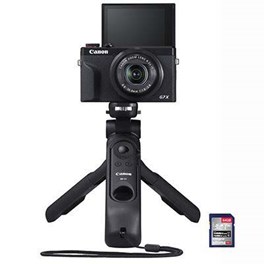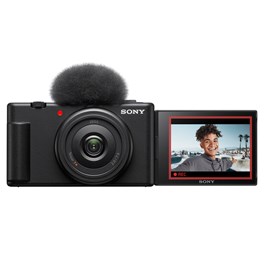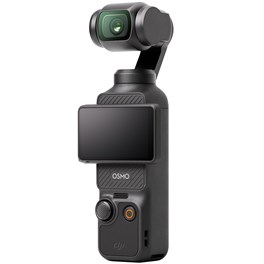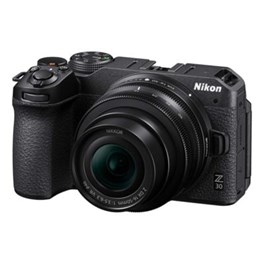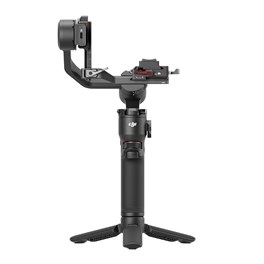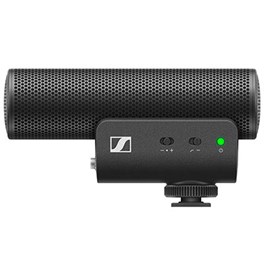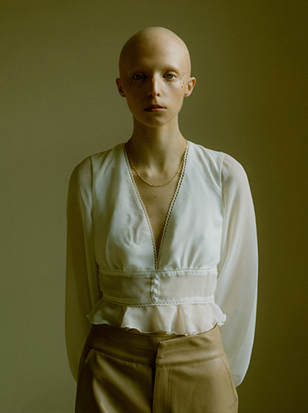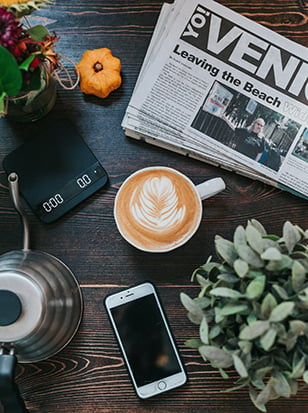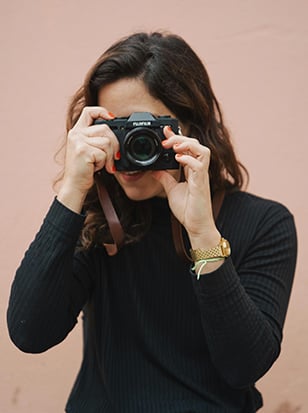
You might have assumed that the best camera for TikTok would be a phone. However, if you want to create something a little different, with better image quality, that doesn’t just look like everyone else’s videos, then a dedicated camera is the way to do it.
Depending on whether you choose a mirrorless camera, a premium compact, an action camera or a stabilised gimbal camera, you can radically transform what’s possible with your TikTok videos. A bigger sensor gives you much better low-light potential; a built-in gimbal makes it easy to capture smooth footage on the move; waterproofing opens up new possibilities for the kinds of imagery you can produce. Whatever you want to achieve with your TikToks, there’s likely a camera that can help.
Manufacturers have responded to the rise of TikTok, and many modern cameras have TikTok-friendly features like vertical video shooting modes. The cameras on this list are all models that our team have tested and rated, and any of them could potentially make a real difference to what’s possible with your TikToks.
What's coming up:
Best compact camera for TikTok: Canon PowerShot G7 X Mark III
Best affordable camera for TikTok: Sony Vlog ZV-1F
Best gimbal camera for TikTok: DJI Osmo Pocket 3
Best action camera for TikTok: GoPro Hero 13 Black
Best mirrorless camera for TikTok: Sony ZV-E10 II
Best affordable mirrorless camera for TikTok: Nikon Z30
Best compact camera for TikTok:
|
Pros:
Cons:
|
Sensor: 20.1MP 1-inch stacked CMOS Lens: 24–100mm equivalent f1.8–2.8 with Optical IS Video: 4K at 30p; Full HD at 120p; live streaming support Screen: 3-inch tilting touchscreen LCD Connectivity: Wi-Fi, Bluetooth, external mic input |
Canon’s G7X series of compacts proved a surprisingly big hit with YouTubers and vloggers, and so Canon pitched heavily towards this audience when it came time to release the Mark III version of the camera. The G7X Mark III takes solid fundamentals – a 1-inch sensor and a 24-100mm equivalent f1.8-2.8 lens – and adds plenty of video-friendly features like a mic socket and a flip-up touchscreen for self-taping. All this comes in a camera that slips into a pocket – it’s thicker than your phone, but not by much, making it easy to take everywhere with you.
The aforementioned mic port allows you to hook up an external microphone to significantly improve the quality of your audio, which is hugely handy (though a hotshoe on top of the camera to mount a shotgun mic wouldn’t have gone amiss). All in all, with this camera, your TikTok video will look and sound excellent, and it’s hard to ask for more than that.
Best affordable camera for TikTok:
|
Pros:
Cons:
|
Sensor: 20.1MP 1-inch Exmor RS CMOS Lens: Fixed 20mm f2.0 ZEISS Tessar T* Video: 4K at 30p; Full HD at 120p; S-Log3 and HLG support Screen: 3-inch vari-angle touchscreen LCD Audio: Built-in directional 3-capsule mic with windscreen |
A vlogging compact camera is the ideal step-up point if you want to graduate from your smartphone to a more serious setup, but don’t want to spend a fortune. Sony’s Vlog ZV-1F is a highly affordable and user-friendly option, pairing a 1-inch sensor with a 20mm lens that gives you a nice, wide perspective – perfect for filming yourself one-handed.
The ZV-1F is designed to make high-quality vlogging simple for most users. As such, you are encouraged to make full use of the ‘Intelligent Auto’ modes, which automatically give you the best settings for different lighting conditions. Also, while audio will certainly be better if you get an external mic (more on that later), the three-capsule mic system in the ZV-1F is a decent performer and will capture clean audio in most situations. The wind-shield the camera comes bundled with will further help with this if you’re shooting outdoors. Overall, this is a clever and cheap vlogging compact that’s going to suit any TikTok user who’s working to a budget but is still on the hunt for higher-quality footage.
Best gimbal camera for TikTok:
|
Pros:
Cons:
|
Sensor: 1-inch CMOS (9.4MP stills) Video: 4K at 120fps; 10-bit colour; D-Log M and HLG profiles Stabilisation: 3-axis mechanical gimbal Screen: 2-inch rotatable touchscreen Connectivity: Wi-Fi, Bluetooth, livestreaming support |
Since many vloggers and video content creators will tell you to buy a camera and a gimbal, why not save yourself some time and money by getting both at the same time? The DJI Osmo Pocket 3 is a small camera that’s built into a 3-axis stabilised gimbal, meaning that it keeps your footage looking silky-smooth even when you run-and-gun with the camera.
It’s made for TikTok and other vertical video platforms; not only does it have a vertical shooting mode, but when you activate it, the little LCD screen will rotate to vertical orientation to give you a fully accurate preview of what you’re capturing. Thanks to a 1-inch CMOS sensor, the DJI Osmo Pocket 3 captures bright, vivid and attractive footage in a variety of conditions, even holding its own in poor light. The one thing to note is that it’s not rugged or weather-sealed, so care needs to be taken if you use it in tricky conditions.
Best action camera for TikTok:
|
Pros:
Cons:
|
Sensor: 27MP 1/1.9-inch CMOS Video: 5.3K at 60p; 4K at 120p; 400fps at 720p Stabilisation: HyperSmooth 6.0 with AutoBoost Battery: 1900mAh Enduro battery (up to 2.5 hrs runtime) Waterproofing: Rugged and waterproof to 33ft |
Action cameras are hugely popular on TikTok, and if you want to share exciting footage of your adventures, the GoPro Hero 13 Black should be your port of call. It uses a larger 8:7 format sensor, which allows it to capture footage in almost square format. This means it’s very easy to crop your videos into the TikTok-friendly vertical 9:16 aspect ratio; indeed, the Hero 13 Black has a dedicated mode for doing just that. The ample resolution of 5.3K means you have plenty of pixels to work with.
Elsewhere, it’s the same old waterproof GoPro that so many people have enjoyed over the years, only turbo-charged with HyperSmooth 6.0 stabilisation, extended runtimes thanks to the bigger-than-ever battery, and compatibility with GoPro’s new HB-Series lenses that can radically change the look and feel of your footage. Wear it, mount it, use it however you want: with a GoPro, you are free to get creative.
Best mirrorless camera for TikTok:
|
Pros:
Cons:
|
Sensor: 26MP APS-C BSI-CMOS Video: 4K at 60p; Full HD at 120p; 10-bit 4:2:2 internal Autofocus: 759-point phase detection with Eye AF Screen: 3-inch fully articulating touchscreen Audio: Built-in 3-capsule mic; mic and headphone ports |
The ZV-E10 II is one of the first mirrorless cameras you’ll likely hear recommended if you’re someone who’s fairly new to video and is looking for a solid, reasonably affordable buy. It’s fairly easy to use, but produces great-looking 4K footage, with the option to shoot in 60p for ultra-smoothness.
The ZV-E10 II was also one of the first mirrorless cameras to really lean into TikTok users, offering dedicated vertical shooting modes and an interface that rotates itself wholesale when you shoot in this format. There are plenty more useful features for anyone who’s not hugely confident (yet) with using a camera, like the bokeh switch that instantly gives you a defocused background. Its built-in three-capsule mic setup also delivers great sound, and while you’ll always get better results with a dedicated external mic, the ZV-E10 II’s audio prowess is sufficient that you’ll get away with not having one. Pick it up with the 16-50mm II Power Zoom lens, and you’ve got everything you need to get cracking.
Best affordable mirrorless camera for TikTok:
|
Pros:
Cons:
|
Sensor: 21MP APS-C CMOS Video: 4K at 30p; Full HD at 120p; no crop Autofocus: 209-point hybrid AF with Eye Detection Screen: 3-inch fully articulating touchscreen Connectivity: USB-C, Wi-Fi, Bluetooth; webcam support |
The slimmest, lightest camera in the Nikon Z mirrorless range, the Z30 firmly has both feet in the vlogging camp, with a flip-around screen and no viewfinder to speak of. Despite its slim proportions, the camera is effectively designed to be easy to hold, with a pronounced handgrip that allows for one-handed use. The APS-C sensor produces high-quality video, and there are plenty of handy quality-of-life features such as the USB-C port that allows the user to keep charging the camera while recording.
The Z30 is a DX-format (Nikon’s term for APS-C) camera that uses the Z lens mount, and there still aren’t very many native APS-C Z-mount lenses. This will change over time, and you can use the full-frame ones, but it’s still something we’d like to see Nikon expand upon. Also, while it is possible to plug in an external mic, the Z30 doesn’t have a headphone jack for audio monitoring.
Best Accessories for TikTok
Accessories are hugely important in the world of video – arguably more so than in photography. However, this doesn’t mean that you need to kit yourself out to the nines in order to shoot a decent video for TikTok. Any of the cameras on our list is more than capable of doing that by itself. The accessories we’ve suggested here are merely ways that you might make your life a little easier, especially if you have specific types of shots in mind.
We’ve kept this list short and simple, as we don’t think you need to weigh yourself down with kit to produce a decent TikTok. We’ve suggested three accessories that might come in handy for certain producers – but not all, so have a read and decide for yourself which ones will help you achieve what you want to achieve with your TikToks.
|
Pros:
Cons:
|
If you’re filming talking-head clips or voiceovers - or your friend making silly sounds - for TikTok, the Hollyland OLM002 Professional Omnidirectional Lavalier Microphone is an easy win. This compact clip-on mic connects directly to your camera or smartphone, delivering that crisp, even sound that’s far better than any built-in option.
Its omnidirectional pickup pattern captures your voice clearly from all angles, while the included wind protection reduces background noise. And there’s no need for batteries or complex setup. Just plug in and go.
Pros:
- Excellent value for money
- Easy and quick to set up
- Strong and stable with up to 3kg of kit
Cons:
- Phone clamp sold separately
A good tripod is an excellent buy for basically any content creator. Even if you’ve decided not to get any of the cameras on our list and stick with your phone, we’d recommend seriously considering a tripod – though in this case you’ll need to pick up a separate phone clamp to attach to the top.
Vanguard is a well-respected photographic accessory manufacturer, so even though this travel tripod is incredibly cheap, you can be assured that it’s a quality piece of kit. Designed to hold up to 3kg of camera equipment (plenty for any camera on this list), it’s quick to set up, easy to transport and highly stable in use. If you want to deliver pieces to camera without having to hold it in place, simply mount it on the Vanguard VESTA TB 204AB Travel Tripod and monologue away to your heart’s content.
Pros:
- Highly effective stabilisation for camera kit
- Touchscreen and physical controls
- Lightweight and easy to transport
Cons:
- Comparatively expensive
- Battery life not the best
While in-camera stabilisation systems are great, if you want to shoot pro-level content on the move, a stabilisation gimbal is a sound investment. As the name implies, the DJI RS 3 Mini is the smallest in DJI’s stabiliser range, designed for mirrorless setups that weigh less than about 2kg – meaning that anything we’ve suggested on this list will fit the bill.
Providing a powerful stabilisation effect thanks to its high-torque motors and sophisticated algorithms, the DJI RS 3 Mini gives you freedom to move and shoot. There’s a native vertical shooting mode, meaning you can capture portrait footage that’ll crop nicely into the TikTok aspect ratio, and controlling the gimbal is nice and simple, with both touchscreen controls and physical mode buttons available. The RS 3 Mini charges via USB-C, and its battery life isn’t the longest, so you may want to bring a power bank.
Pros:
- First-rate audio quality
- Headphone jack
- Integrated wind protection
Cons:
- Other mics offer more advanced features (though to be honest, you probably don’t need them)
- Lavalier mic may be better for some applications
Since we’ve been banging on and on about mic ports and the like throughout this guide, it’s only fitting that we recommend you a decent microphone to buy. The Sennheiser MKE 400 super-cardioid microphone slots neatly into the hotshoe of a mirrorless or compact camera, and it’s a pretty simple thing in operation. Point it at something, and it’ll record any noises that thing makes in pristine detail. It also has its own headphone jack for audio monitoring, so if you get the mic, you can ignore all the whining we’ve done in previous entries about cameras not having headphone ports.
Depending on what kind of videos you plan to shoot, a directional mic may or may not be the right fit for you – a clip-on lavalier mic is also worth considering. If the Sennheiser MKE 400 fits the bill for you though, it’s a fantastic mic that is light enough to take anywhere.

FAQs
What is the recommended video format for TikTok?
The recommended video format for TikTok is MP4. It's important to ensure that your videos are in the correct format before uploading them to the platform.
What is the ideal video length for TikTok?
The ideal video length for TikTok is 15 seconds or less. Shorter videos tend to perform better and capture the attention of viewers more effectively.
How can I improve the lighting in my TikTok videos?
To improve the lighting in your TikTok videos, consider filming in a well-lit area or using additional lighting sources such as ring lights or softboxes. Avoid filming in dimly lit environments to ensure better video quality.
What are some popular video editing apps for TikTok?
Some popular video editing apps for TikTok include Adobe Premiere Rush and iMovie. These apps offer a range of features to help you edit and enhance your TikTok videos.
How can I add text or captions to my TikTok videos?
You can add text or captions to your TikTok videos by using the built-in text editing features within the TikTok app. Simply select the "Text" option while editing your video and enter the desired text or captions.
How can I make my TikTok videos more engaging?
To make your TikTok videos more engaging, consider using eye-catching visuals, incorporating popular trends or challenges, using humour or storytelling, and experimenting with different video effects and transitions.
What are TikTok's guidelines for using copyrighted music in videos?
TikTok has a vast library of licensed music that you can use in your videos without worrying about copyright issues. However, if you choose to use copyrighted music, ensure that you have the necessary rights or permissions to do so to avoid any potential violations.
How do we decide?
Our in-house photography experts, store staff and partners all work collaboratively to pour over our guides and tips articles. We also consider emerging trends and customer feedback to make sure our guides are always up-to-date and reflective of what people are truly looking for. By curating only the best products, our guides provide trustworthy recommendations, making it easier for customers to make informed choices with confidence.
If you would like more advice on any purchase our contact centre staff are here to help. Alternatively, you can reach us via email or social media. And don't forget. If you were to purchase anything based on our recommendations you'll be covered by our full returns policy
The Wex Blog
Sign up for our newsletter today!
- Subscribe for exclusive discounts and special offers
- Receive our monthly content roundups
- Get the latest news and know-how from our experts

